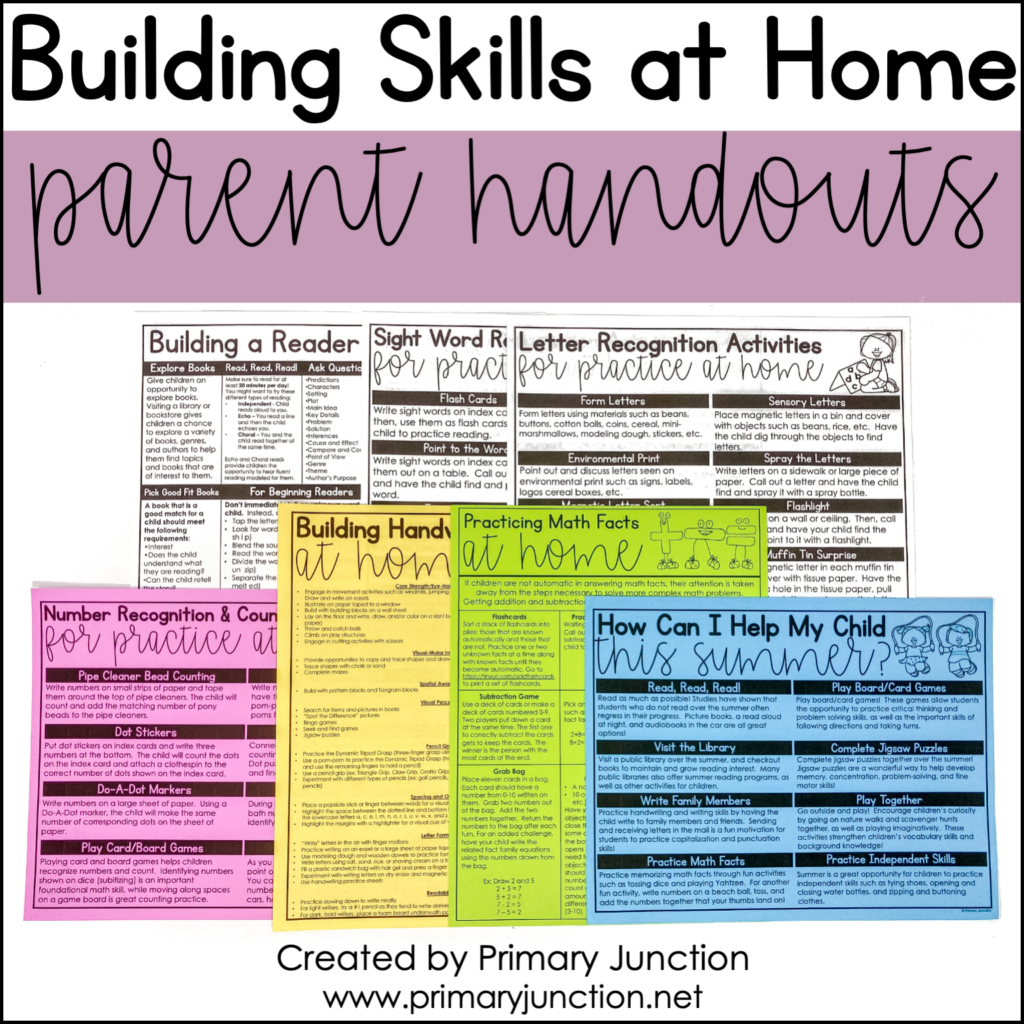Building Math Skills at Home – Parent Handout
math · Conferences · family · hand out · parent night
It’s almost time for Parent Conferences/Parent Nights, and I always like to have valuable handouts for parents to take home on these occasions. It’s so easy to suggest an idea or two to a parent in passing, but in my experience, parents appreciate having something tangible they can take home and place on their refrigerator. It serves as a great reminder! Over the next few days, I’ll be sharing several subject-themed handouts and conference preparation materials that hopefully some of you other teachers can use as well!
Today I am sharing a Building Math Skills at Home Parent Handout. As we all know, it is so important for parents to practice math skills at home with their kids, and this handout shares some creative ways parents can make math fun, engaging, and effortless at home!
With a little creativity, you can make math lots of fun! Here are some easy things that you can do at home to help your child with math.
•There are many games that you probably already have at home that encourage development in math: Yahtzee (basic addition), Connect Four (problem-solving,, developing strategies), Puzzles (spatial awareness), Card Games (have players flip cards and greatest or least number wins), Candy Land (make your own game cards and use math facts instead of colors), Monopoly (money), Battleship (coordinate graphs), etc.
•Talk about the calendar with your child. Make it exciting by looking forward to special events. It is fun for them to count the weeks and days until birthdays or to see what day of the week a specific holiday will be on this year.
•You can help your child learn to count money by playing store with them. Use real coins and let them be the “cashier”.
•Use an empty egg carton as a counting tool to practice addition and subtraction skills up to 10. Simply place an object in slots and use the empty slots to count up to/from 10.
•Notice the clock. Tell them that they can play a game at a certain time. Begin with easy times (7:00) and get progressively more difficult (7:30 and 7:45).
•Bake with your child. Read the instructions on the back of the box and allow them to measure the ingredients.
•You can develop a better understanding of fractions by discussing equal parts with your child. Any time you bake a frozen pizza, it is an opportunity to let them understand what 1/6 means.
•Making flashcards of basic addition or subtraction facts can be an easy way to practice. You can make it a game by seeing how many they can answer in a minute. If they improve their score over time, reward them.
•You can make pot holders on a small loom. This is a good way to practice making and extending patterns.
•Any time there is a project at home that involves measuring inches or feet, let your child help! This allows them to understand that the concepts they are learning in school have real-world applications.
•Point out shapes and discuss them. If you see a “YIELD” sign, discuss that it is a triangle and ask your child how many sides would be on 3 “YIELD” signs.

